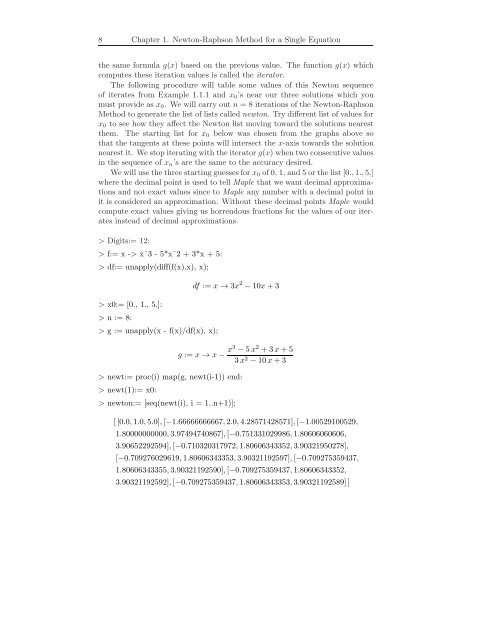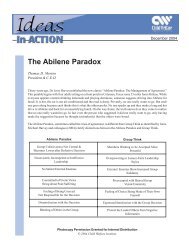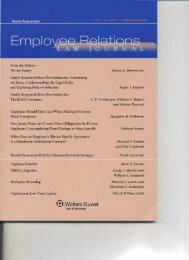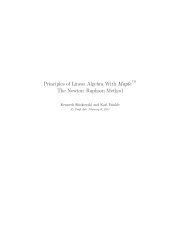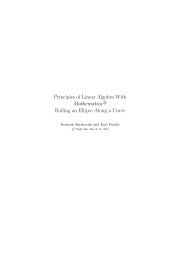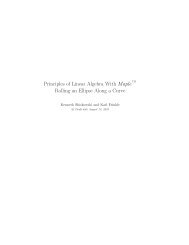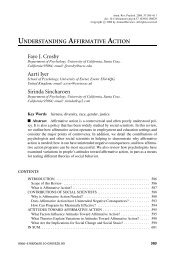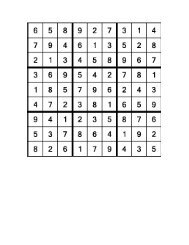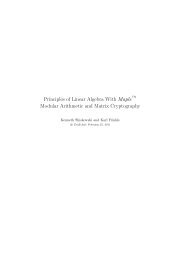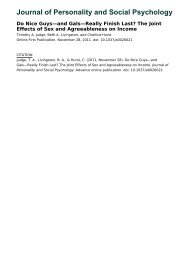Principles of Linear Algebra With Maple The NewtonâRaphson ...
Principles of Linear Algebra With Maple The NewtonâRaphson ...
Principles of Linear Algebra With Maple The NewtonâRaphson ...
- No tags were found...
Create successful ePaper yourself
Turn your PDF publications into a flip-book with our unique Google optimized e-Paper software.
8 Chapter 1. Newton-Raphson Method for a Single Equationthe same formula g(x) based on the previous value. <strong>The</strong> function g(x) whichcomputes these iteration values is called the iterator.<strong>The</strong> following procedure will table some values <strong>of</strong> this Newton sequence<strong>of</strong> iterates from Example 1.1.1 and x 0 ’s near our three solutions which youmust provide as x 0 . We will carry out n = 8 iterations <strong>of</strong> the Newton-RaphsonMethod to generate the list <strong>of</strong> lists called newton. Try different list <strong>of</strong> values forx 0 to see how they affect the Newton list moving toward the solutions nearestthem. <strong>The</strong> starting list for x 0 below was chosen from the graphs above sothat the tangents at these points will intersect the x-axis towards the solutionnearest it. We stop iteratingwith the iteratorg(x) when twoconsecutivevaluesin the sequence <strong>of</strong> x n ’s are the same to the accuracy desired.Wewillusethethreestartingguessesforx 0 <strong>of</strong>0, 1, and5orthe list[0.,1.,5.]where the decimal point is used to tell <strong>Maple</strong> that we want decimal approximationsand not exact values since to <strong>Maple</strong> any number with a decimal point init is considered an approximation. <strong>With</strong>out these decimal points <strong>Maple</strong> wouldcompute exact values giving us horrendous fractions for the values <strong>of</strong> our iteratesinstead <strong>of</strong> decimal approximations.> Digits:= 12:> f:= x -> xˆ3 - 5*xˆ2 + 3*x + 5:> df:= unapply(diff(f(x),x), x);> x0:= [0., 1., 5.]:> n := 8:> g := unapply(x - f(x)/df(x), x);df := x → 3x 2 −10x+3g := x → x− x3 −5x 2 +3x+53x 2 −10x+3> newt:= proc(i) map(g, newt(i-1)) end:> newt(1):= x0:> newton:= [seq(newt(i), i = 1..n+1)];[[0.0,1.0,5.0],[−1.66666666667,2.0,4.28571428571],[−1.00529100529,1.80000000000,3.97494740867],[−0.751331029986,1.80606060606,3.90652292594],[−0.710320317972,1.80606343352,3.90321950278],[−0.709276029619,1.80606343353,3.90321192597],[−0.709275359437,1.80606343355,3.90321192590],[−0.709275359437,1.80606343352,3.90321192592],[−0.709275359437,1.80606343353,3.90321192589]]


